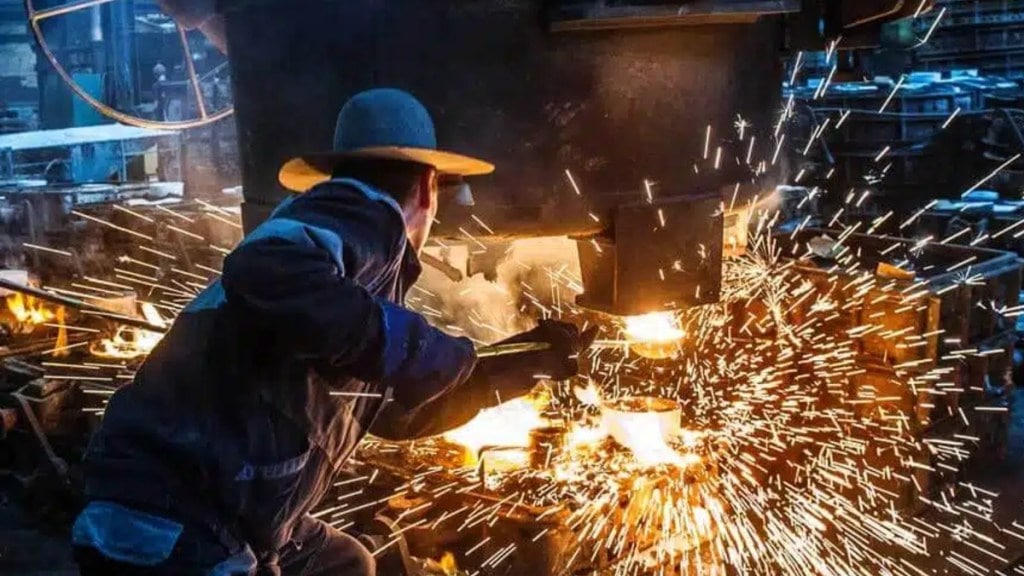US president Donald Trump’s proposed steep 50% tariff on copper may only have a modest impact on import-reliant India’s outbound shipments of the metal. Surging domestic demand from both traditional and emerging sectors, such as electric vehicles (EV) and renewable energy (RE), coupled with a sharp fall in domestic production, has already dented India’s capacity to export copper.
In FY25, total exports were $2.32 billion, with 17% of it going to the US. However, India’s imports of copper in the last fiscal stood at a whopping $10.65 billion.
In fact, with domestic exploration of the mineral stagnating, India meets 95% of copper concentrate needs through imports, mainly from Indonesia and Chile, to produce refined copper. India turned a net importer of refined copper following the closure of Vedanta’s 0.4 million tonnes per annum (MTPA) Sterlite Copper’s Thoothukudi plant in May 2018.
The country’s refined copper usage rose from 0.489 MT in 2019 to 0.840 MT in 2024, growing at a CAGR of 13.15%. Large public investments in infrastructure, a shift towards RE and growth in the automotive and EV sectors are fuelling the growth in demand.
“India is a copper-deficient country, and its exports, as such, aren’t significant on a global scale. The proposed 50% duty will not have any serious impact on the Indian firms, especially since the domestic demand is extremely buoyant,” said Mayur Karmarkar, Managing Director, International Copper Association India.
Jayprakash Sahu, a BigMint analyst said, “India faces only a modest direct hit from Washington’s 50% copper duty: US-bound exports were just 13,000 tonnes in 2024, about 8% of India’s total copper export basket, versus far larger sales to Saudi Arabia and China (together 50%+) that remain tariff-free. Domestic demand tied to RE and EV is booming, allowing Indian producers to readily divert volumes to Asia-Gulf markets while benefiting from a likely dip in the London price. By contrast, the pain is concentrated in Chile, Canada, and Mexico, which supply roughly 40%, 30% and 8% of US refined-copper imports, respectively; losing preferential access means these miners must discount or find new.”
Shares of domestic firms Hindalco and Hindustan Copper declined by 1.2% and 3.5% respectively on the BSE.
Following Trump’s announcement of the tariff hike to protect the domestic industry, which is likely to take effect by the end of July, copper futures in New York surged 17% on Tuesday – their biggest single-day gain on record, before declining by around 1.5% in both the London Metal Exchange (LME) and the Shanghai Futures Exchange (SHFE) on Wednesday.
Research from the CRU Group, commissioned by the International Copper Association (ICA), recently predicted that the global copper demand will increase from 28.3 MT in 2020 to 40.9 MT in 2040, at a CAGR of 1.5%. The growth will be the strongest in India with a 7% CAGR, closely followed by the Association of Southeast Asian Nations (ASEAN) with a 6% CAGR.
The government expects India’s copper demand to double by 2030 as the country accelerates its industrial and economic resilience. This necessitates expanding domestic exploration, enhancing refining capacity, and strengthening supply chain resilience. Sensing the need, the government has amended the MMDR Act and introduced a composite licensing system for copper blocks. However, since 2015, five copper mineral blocks have been auctioned. There are 54 ongoing copper exploration projects in different parts of the country.
The building construction sector accounts for 24% of domestic copper use, infrastructure for 19%, industrial sector for 17%, transportation for 11%, consumer durables for 12%, and other sectors for the remaining 17%.
Recognising the critical role of copper in driving industrial growth, clean energy transitions, and advanced manufacturing, India is aggressively pursuing a two-pronged approach: accelerating domestic exploration while securing strategic assets overseas, to reduce dependency and build resilience.

